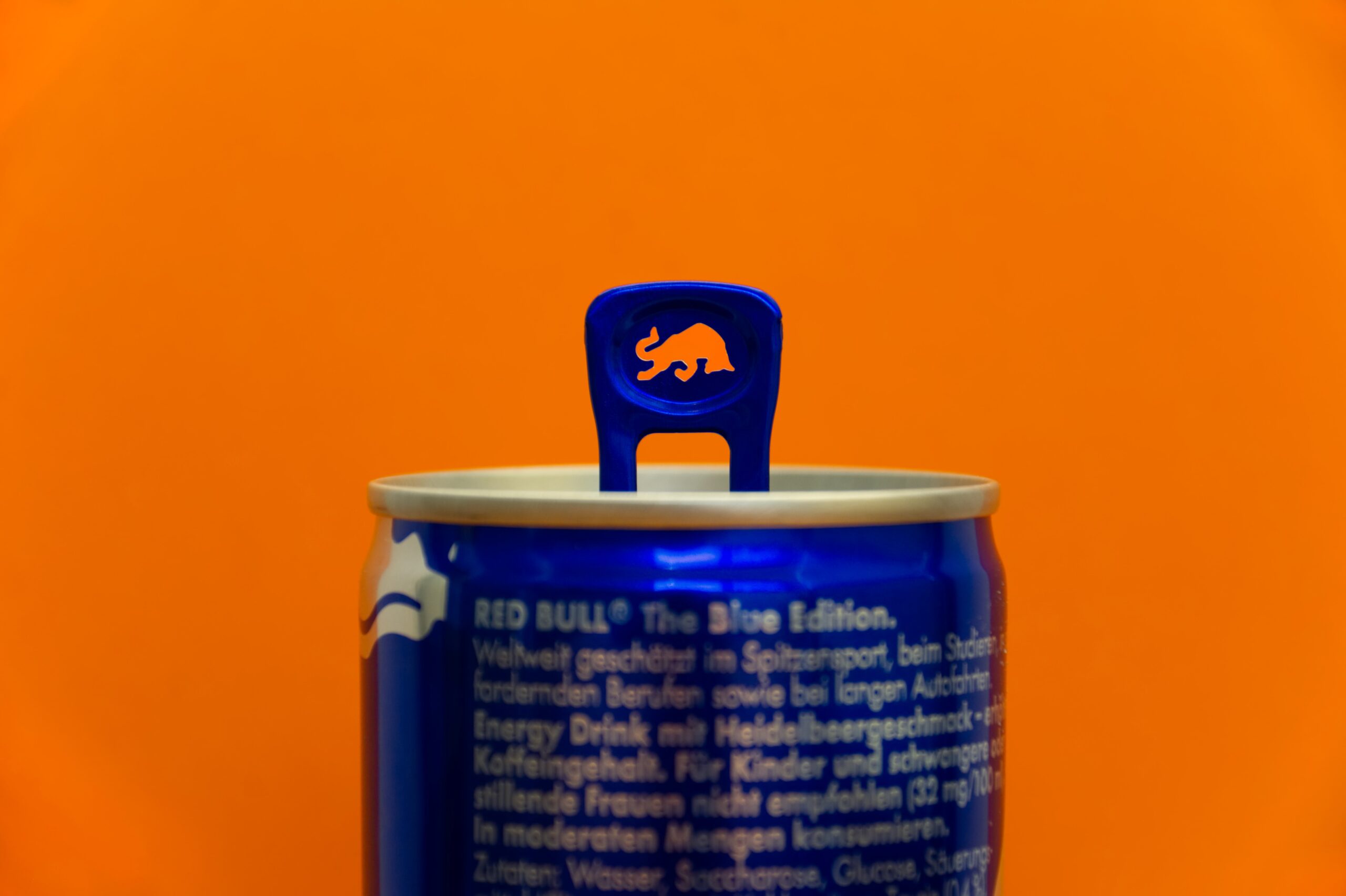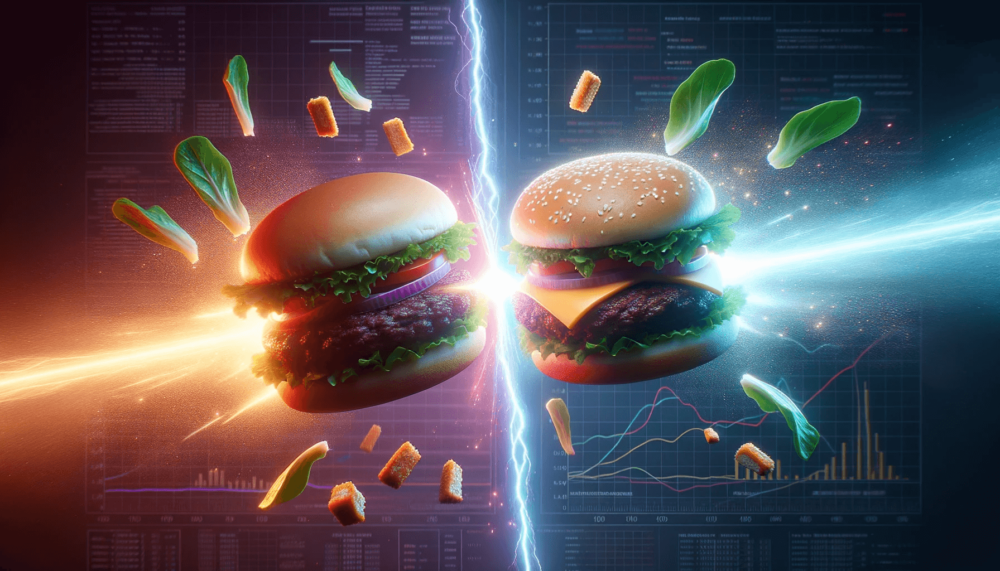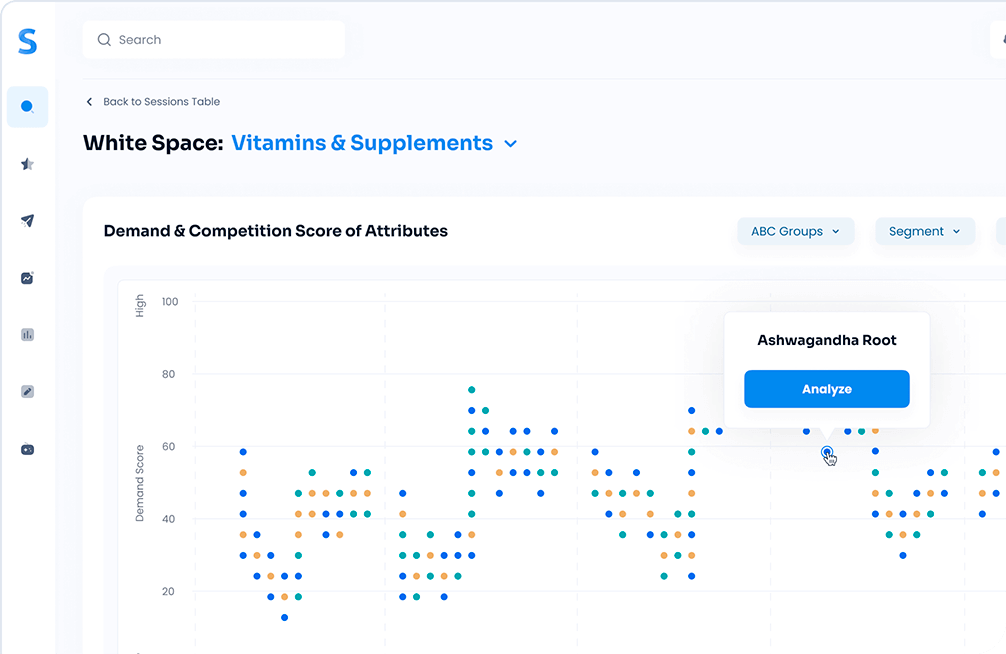Red Bull energy drinks have dominated the category for decades. For a long time, the Coca-Cola brand seemed content with focusing on its own soda category, solely. Where Coca-Cola was present in the energy market category, it was under the separate brand name Monster.
However, this changed in 2020, when Coca-Cola launched its first energy drink under the Coca-Cola brand. Coca-Cola Energy first launched in the UK and Ireland and, in January 2020, rolled out in the US. For Red Bull, it is time to defend its turf (with product innovation) to stay on top of the category.
Collecting data about Redbull Energy Drinks Using Simporter’s AI tool
To identify new product opportunities for Red Bull energy drinks, Simporter’s White Space AI software collected customer reviews, product descriptions, search traffic, and social media data covering both the energy drink category and adjacent categories including other beverages, foods, and nutritional supplements. The software then, using Natural Language Processing, identifies gaps between consumer needs and current product offerings—at the attribute level. In a matter of seconds, the White Space tool provides recommendations of attributes and consumer need states that Red Bull can act on.
Revealing Redbull Energy Drinks new opportunities
To find the relevant attributes, which would help Red Bull stand out in the energy drink market, we honed in on the key ingredients of Red Bull versus Coca-Cola’s latest launch.
Red Bull, the market stalwart, focuses on Taurine, so why did Coca Cola choose B vitamins and Guarana as the main areas of focus for Coca-Cola Energy?
This is what our software reported:
There is little difference in consumer interest between Taurine and Guarana. Taurine and Guarana are both energy enhancers. Guarana is an herbal supplement that also contains a lot of caffeine. B vitamins, on the other hand, have captured consumer attention, known as a natural and healthy method for increasing energy. To meet consumer demand and gain marketshare over competition like Red Bull, Coca-Cola’s new energy drink products focus on B vitamins, displayed right on the front of the can and in the beginning of their product descriptions. The Fortune 100 giant knows that Millennials take an active interest in their health, especially when they are with their peers, and appeals to the consumer need for a healthier energy drink—to increase their sales. Covid-19 has only driven health conscious consumerism even further.
An Easy Path to Accessing Demand for Vitamin B
To increase interest in the product and, by association, sales, Red Bull should consider re-labeling its messaging so that consumers are aware that the ingredient niacin is, in fact, Vitamin B3. With such a mild change, the brand can tap into health-conscious consumers and effectively hedge against Coca-Cola’s B-Vitamin enhanced product. Yet consumers truly don’t understand what niacin is, with more than 100,000 searches every year asking the question: “Is Niacin a B vitamin?”
So why does Red Bull energy drinks push Taurine?
We wondered why Red Bull continued to focus on Taurine as a key ingredient despite its declining demand. Taurine, derived from the Latin word taurus, meaning “ox “or “bull,” is a type of amino acid with metabolic benefits. The ingredient’spurpose in Red Bull, besides its Latin root, is unclear. Interestingly, the figure below displays a possible mismatch between the interests of the US market and consumers in Austria around Taurine demand. Over the past 16 years, interest in Taurine has waned in the US, while it continues to grow in Austria, where Red Bull is headquarted. The result of growing interest in Austria may be a cause of disconnect with brand strategy. The HQ may be more aware of consumer interest locally in Austria than the declining interst in the United States.
How else can Red Bull re-energize its products?
With interest in taurine declining in the US, Red Bull should begin to research other ingredients that consumers are actively searching for. Electrolytes, minerals that carry an electric charge, should be at the top of Red Bull’s list to check out. Consumer interest around the mineral has grown at a rapid pace, especially in the past 5 years, trending in the opposite direction of the ever-declining Taurine.
This year, Molson Coors entered the electrolyte energy market when it signed a distribution agreement with ZOA, a healthy alternative to energy drinks with Dwayne “The Rock” Johnson on the founding team. ZOA promotes itself as containing zero sugar, no caffeine, a variety of vitamins, and electrolytes. This messaging enables ZOA to tap into health-conscious consumers in the US actively searching for healthier choices.
The distribution partnership from Molson Coors is a part of the company’s long-term transition into non-alcoholic drinks, such as energy drinks. According to Marlon Hernandez, a Senior Director at Molson-Coors, “ZOA is another step for us in building a sustainable [nonalcohol] business at Molson Coors, not just for today or tomorrow, but for the long-term.”
Other Promising Opportunities in Minerals
While electrolytes are growing rapidly, around the same time period, consumer interest in magnesium energy drinks as also shifted upward. When Red Bull energy drinks first entered the market in 1997, there was a very remote amount of consumer interest in magnesium. By late 2008, all that had changed.
Today, consumers show far more interest in magnesium than in Taurine. Consumers identify the mineral as a natural way to improve energy levels, associating the ingredient with a healthy lifestyle. Unlike electrolytes, magnesium has more competition in the energy drinks category with Rockstar and Monster Energy both containing the mineral.
With that said, packaging and advertising that promotes “Magnesium” within an energy drink remains a relatively unexplored opportunity in the US category even though there are products that contain it. As a result, the mineral-presence claim boasts a large potential opportunity for energy drink brands like Red Bull due to high consumer interest and low competition levels.









